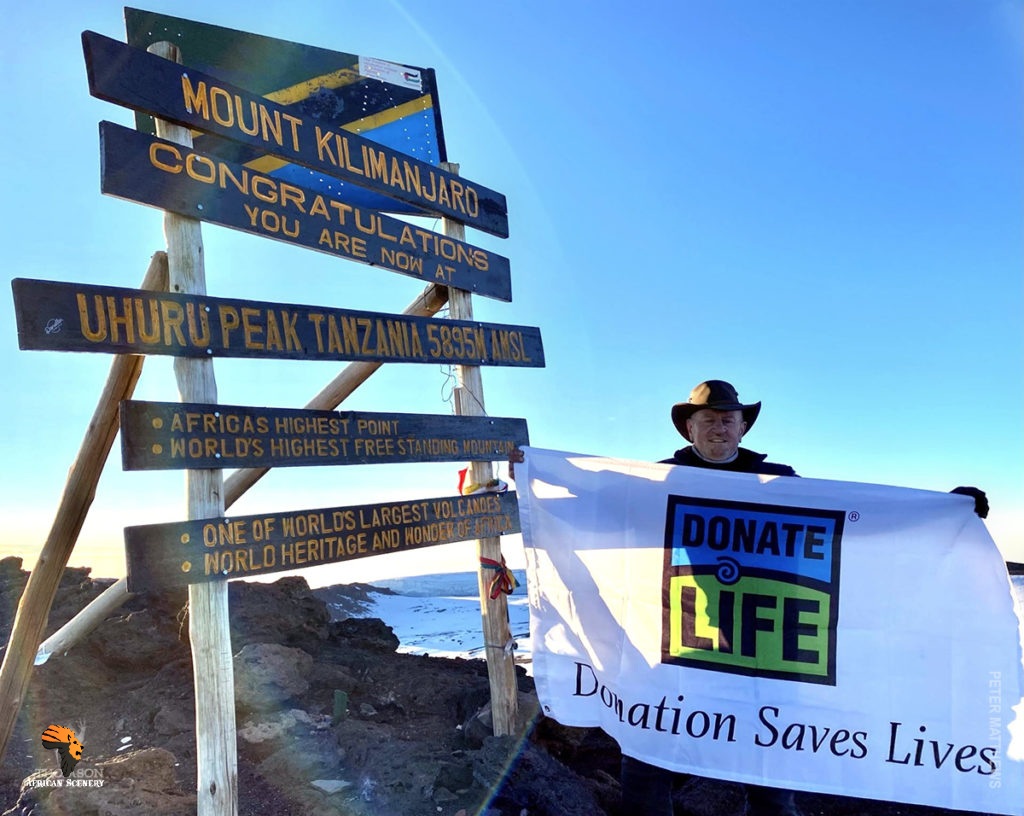
Kilimanjaro, by any name, is a metaphor for the compelling beauty of East Africa. When you see it, you understand why.
Not only is this the highest peak on the Africa continent, it is also the tallest free standing mounting in the World, rising in breathtaking isolation from the surrounding savannah elevation around 900metres – to an imperious 5,895metres MASL (19,336 feet).
Kilimanjaro is one of the World’s most accessible high summits, a beacon for visitors from round the World. Most climbers reach the crater rim with little more than a walking stick, proper clothing and determination.
And those who reach Uhuru Point, the actual summit, Stella Point or Gillman’s Point on the lip of the crater will have earned their climbing certificates.
But there so much more to Kilimanjaro than her summit. The ascent of the slopes is a virtual climatic World tour, from the tropics to the Arctic. Even before you cross the national park boundary (at about 2,700m), the cultivated by elusive elephant, leopard, buffalo, the endangered abbot’s duiker and other small antelope and primates.
Higher still lays the moorland zone, where a cover of giant heather is studded with other worldly giant lobelias. Above 4,000m, a surreal alpine desert supports little life other than a few hardy mosses and lichen. Then, finally, the last vestigial vegetation gives way to a winter wonderland of ice and snow-and the magnificent beauty of the roof of the continent.
Size: Over 1500sq km (575miles)
Location: Northern Tanzania, near the town of Moshi
Getting there: 128km (80miles) from Arusha, about one hour’s drive from Kilimanjaro Airport
What to do: Six usual trekking routes to the summit and other more demanding mountaineering routes Day or overnight hikes on the Shira plateau. Nature trails on the lower reaches. Visit the beautiful Chala Crater Lake on the mountains southeastern slopes.
When to go: Clearest and campsites on the mountain. Several hotels and campsites outside the park in the village of Marangu and town of Moshi
Note: Climb slowly to increase your acclimatization time and maximize your chances of reaching the summit. To avoid altitude sickness, allow a minimum of given nights, preferably even more beauty of the mountain.